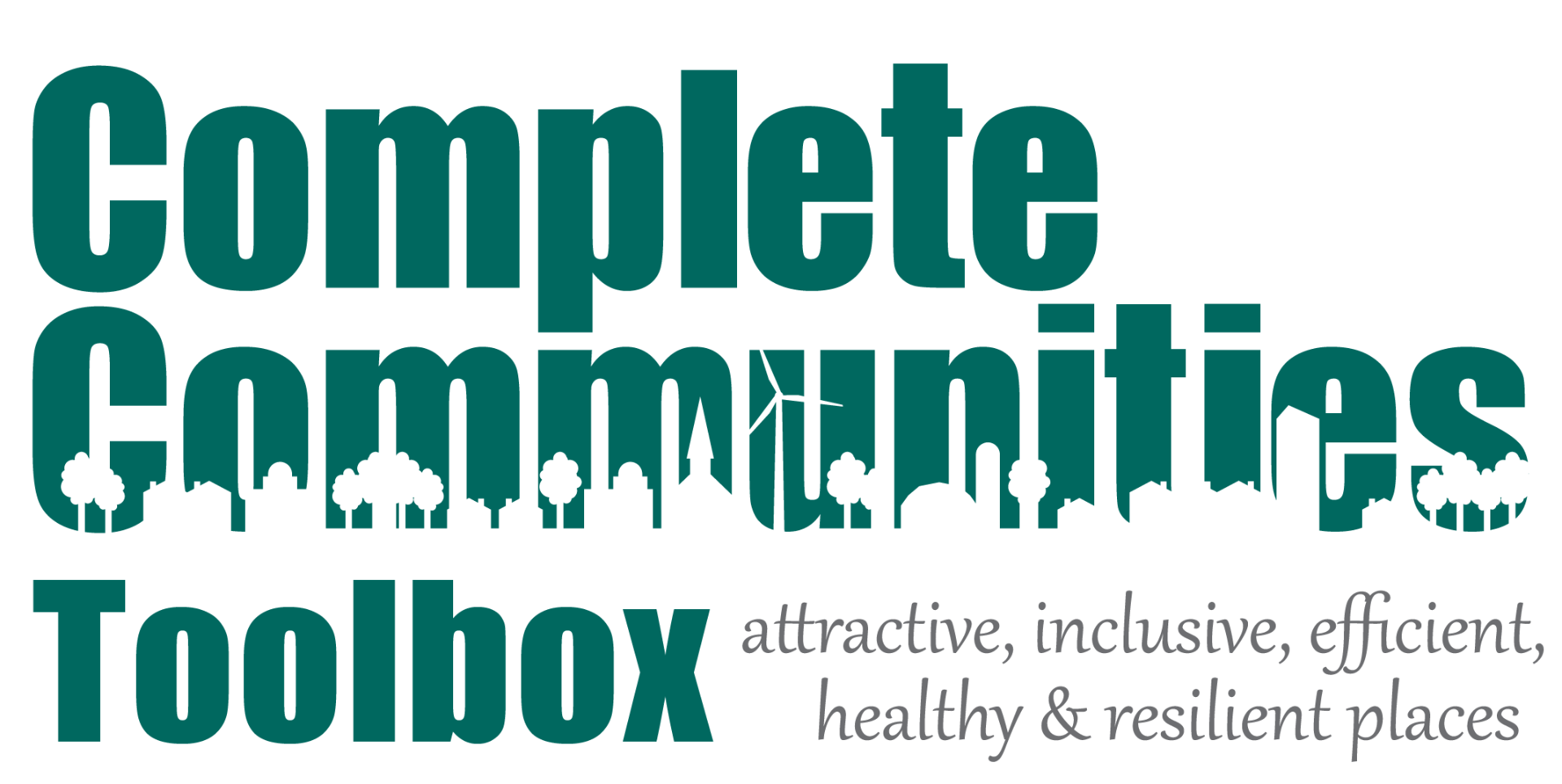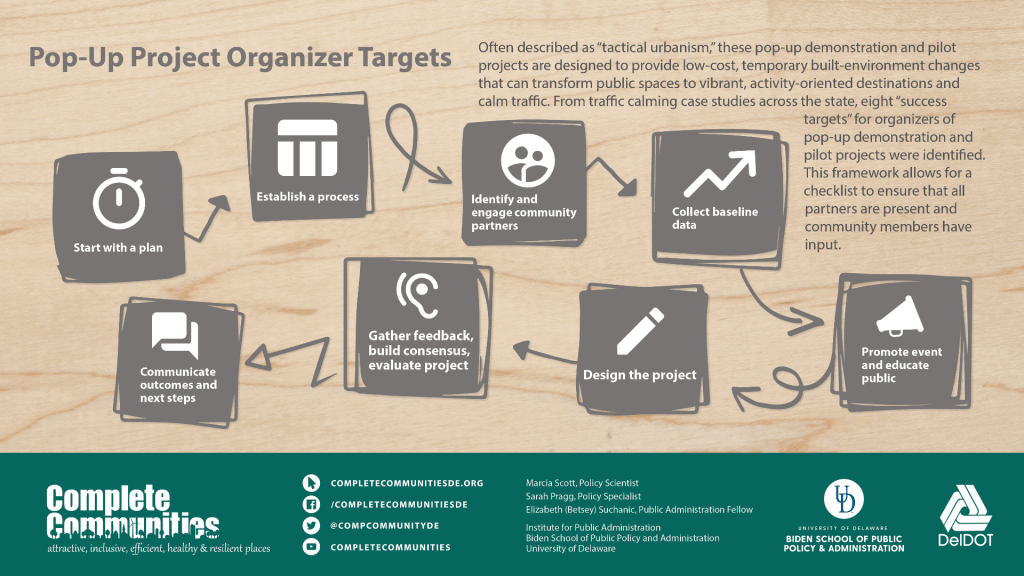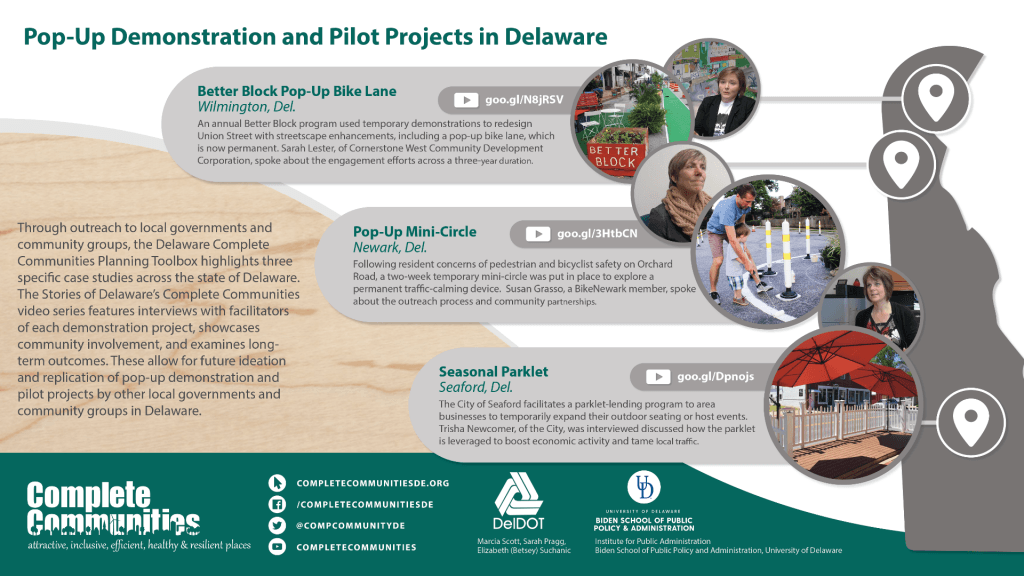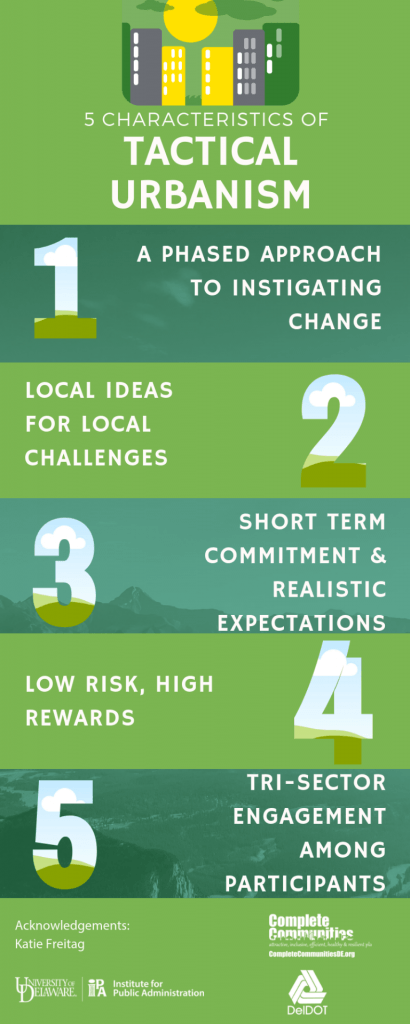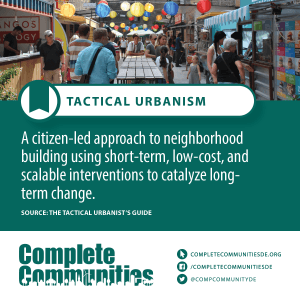
Reconfiguring roadways and public spaces can help calm traffic and achieve more walkable-, bikeable-, and activity-oriented places. But permanent, large-scale changes can be difficult to launch. Often described as “tactical urbanism,” these pop-up demonstration and pilot projects are designed to provide low-cost, temporary built-environment changes that can transform public spaces to vibrant, activity-oriented destinations and calm traffic.
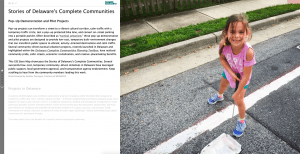
View this GIS story map to learn how tactical urbanism in Delaware has been used to test a pop-up bike lane and transform a street to a vibrant cultural corridor, calm traffic with a temporary traffic circle, and convert on-street parking into a portable parklet.
View the Adobe Spark page below to learn more about how pop-up demonstration and pilot projects collaboratively engage community members to temporarily transform and co-create high-value public spaces—including streets.

